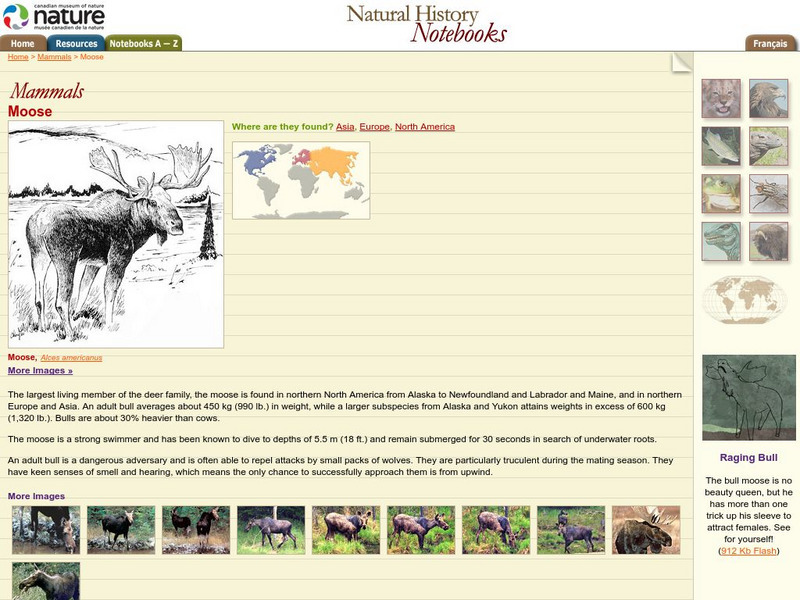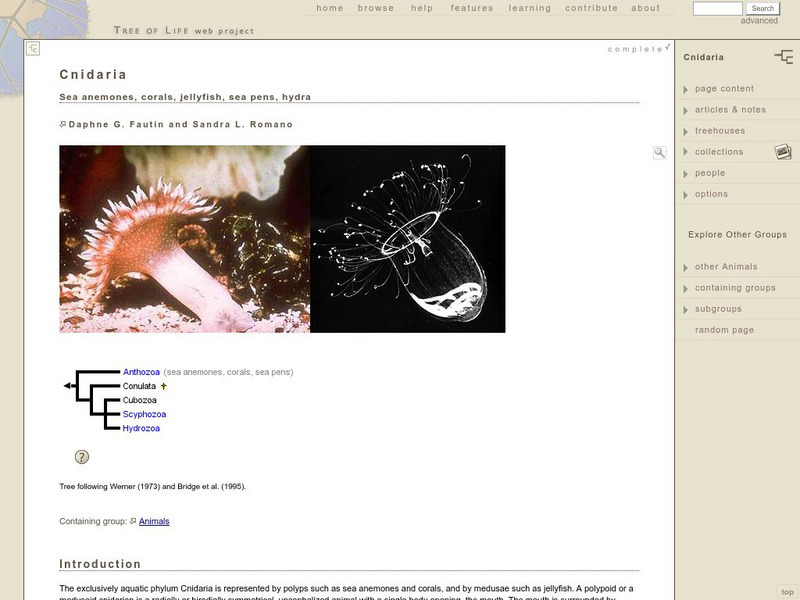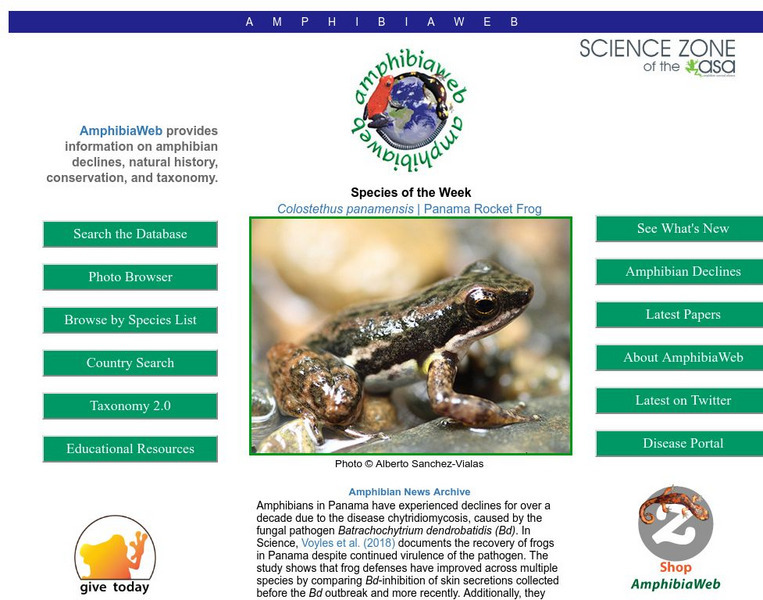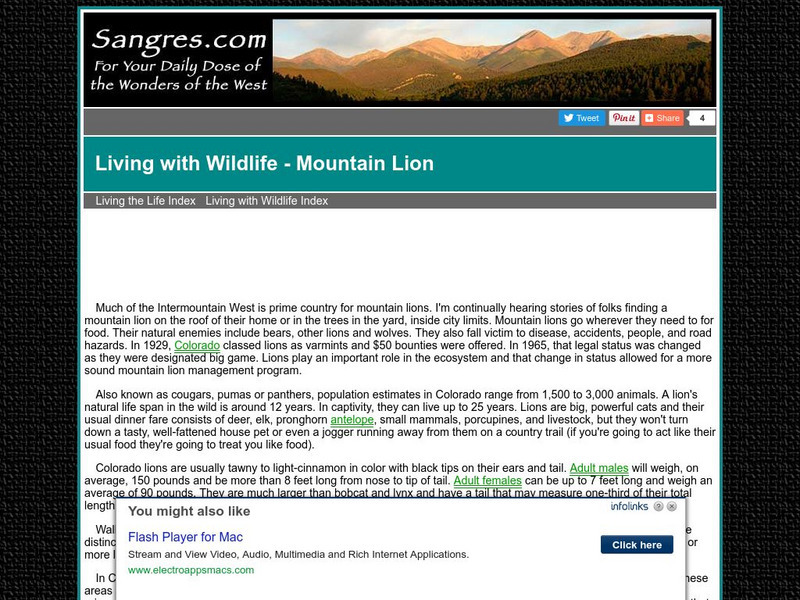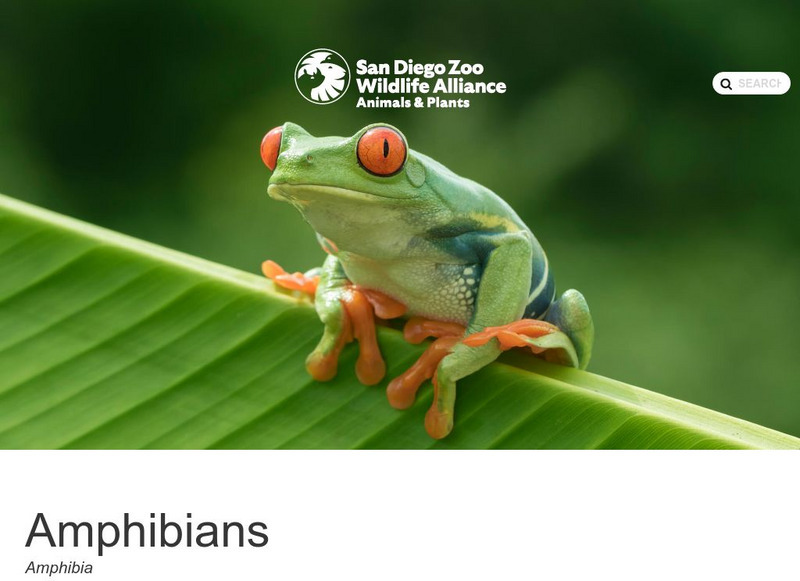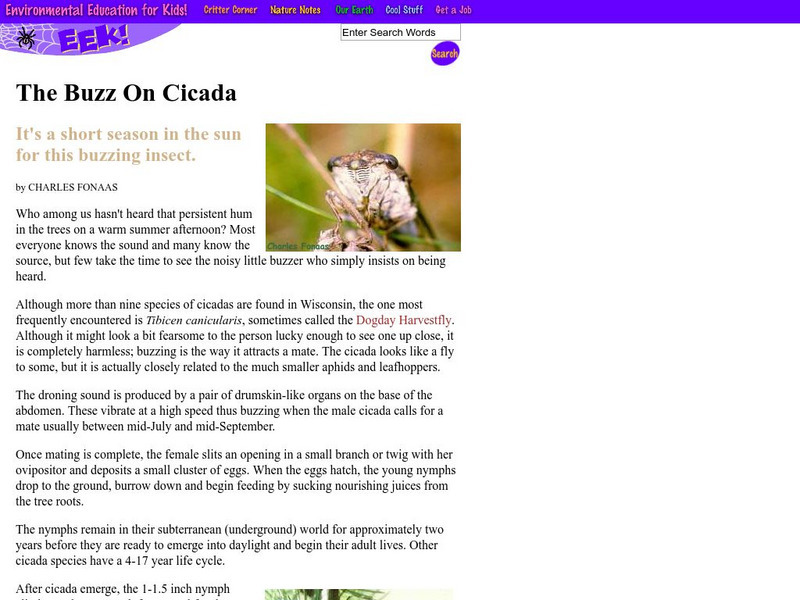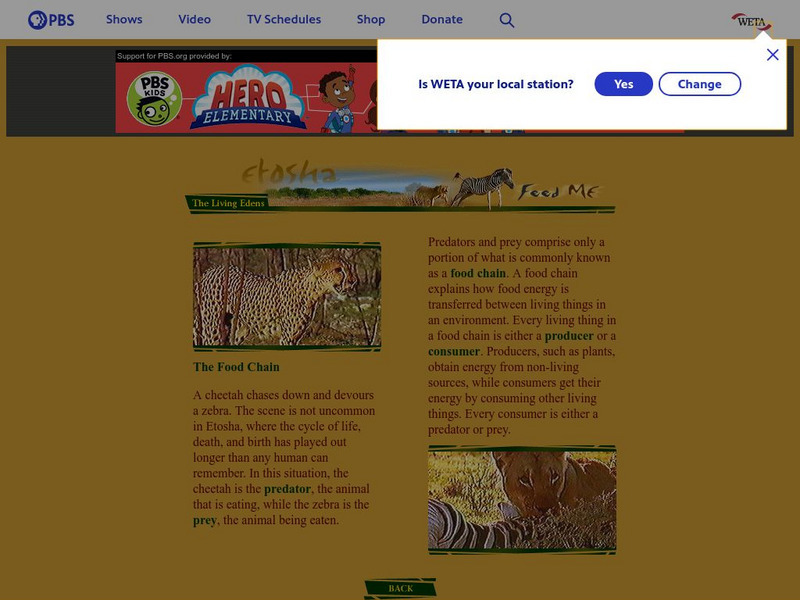Canadian Museum of Nature
Canadian Museum of Nature: Moose
Get to know the Moose.. colored photos, description, life cycle, map of habitat, food. Only the basic details of this large mammal are given, making this site perfect for younger researchers.
Tree of Life Project
Tree of Life: Cnidaria (Coelenterata)
TThis site from the University of Arizona has a discussion of Cnidaria and their reproductive cycles and capabilities.
University of California
Regents of the University of California: Amphibia Web
AmphibiaWeb, a site inspired by global amphibian declines, is an online system that allows free access to information on amphibian biology and conservation. This site is filled with amphibian facts, a glossary of terms, species numbers,...
San Diego Zoo Global
San Diego Zoo: Butterflies
An in-depth description of butterflies, with information about their classification, appearance, habitat, adaptations, reproduction, diet, and other interesting facts. Also includes pictures. [3:17]
Other
Sangres: Living With Wildlife Mountain Lion
A profile of the Colorado mountain lion including description, habitat, range, diet, young, reproduction, other common names it is known by, and even how to act if you should come upon one of these cats in the wild!
San Diego Zoo Global
San Diego Zoo: Amphibians
This resource offers extensive information about amphibians. Visitors can click on the listed amphibians for further information.
Khan Academy
Khan Academy: Animal & Human Viruses
Learn about viruses of humans and other animals, the Baltimore classification system, and the HIV life cycle.
Oakland Zoo
Oakland Zoo: African Lion
This resource offers information about the African Lion, including scientific information, description, habitat and more.
Other
The Ultimate Ungulate Page: Tragelaphus Eurycerus Bongo
This site provides an overview of the bongo. Content includes information on this animal's physical features, size, reproduction, life cycle, and habitat.
Ducksters
Ducksters: Amphibians for Kids: Frogs, Salamanders, and Toads
What is an amphibian? Kids learn about these cold blooded animals including salamanders, frogs, and toads. Lifecycle such as tadpole and metamorphosis.
PBS
Pbs Learning Media: Cloud Age Two
In this video segment from Nature, Cloud, a two-year-old horse, interacts with his family in the wild. [3:23]
Other
K 3 Learning Pages: Reptiles and Amphibians
Come and discover more about reptiles and amphibians when you explore this awesome resource. This site is filled with useful links.
University of Wisconsin
University of Wisconsin: Amphibian Embryology Tutorial
This amphibian embryology tutorial takes an in depth look at the question "Why study amphibians?". Through this tutorial students will develop a better understanding of vertebrate development.
Enchanted Learning
Enchanted Learning: English (Esl) Label Me! Printouts
Over 100 handouts with answer sheets you can print and use to help build English vocabulary. Numerous topics and themes are covered: everyday words, math terms, seasonal and holiday words, geographical terms, animals, opposites, parts of...
Environmental Education for Kids
Eek!: Cicada
This site provides a brief but concise description of this interesting insect. Grades 4-8.
The Franklin Institute
Marshall Elementary School: Ocean Games & Puzzles
Complete interactive word searches to find animals of the intertidal zone. Learn ocean facts by completing a crossword puzzle. Match up pieces of a puzzle to display the water cycle. And after learning all that information, test yourself...
PBS
Pbs: The Living Edens: The Food Chain
PBS site provides some basic information on the food chain.
Curated OER
The Ultimate Ungulate Page: Tragelaphus Eurycerus Bongo
This site provides an overview of the bongo. Content includes information on this animal's physical features, size, reproduction, life cycle, and habitat.
Curated OER
The Ultimate Ungulate Page: Tragelaphus Eurycerus Bongo
This site provides an overview of the bongo. Content includes information on this animal's physical features, size, reproduction, life cycle, and habitat.
